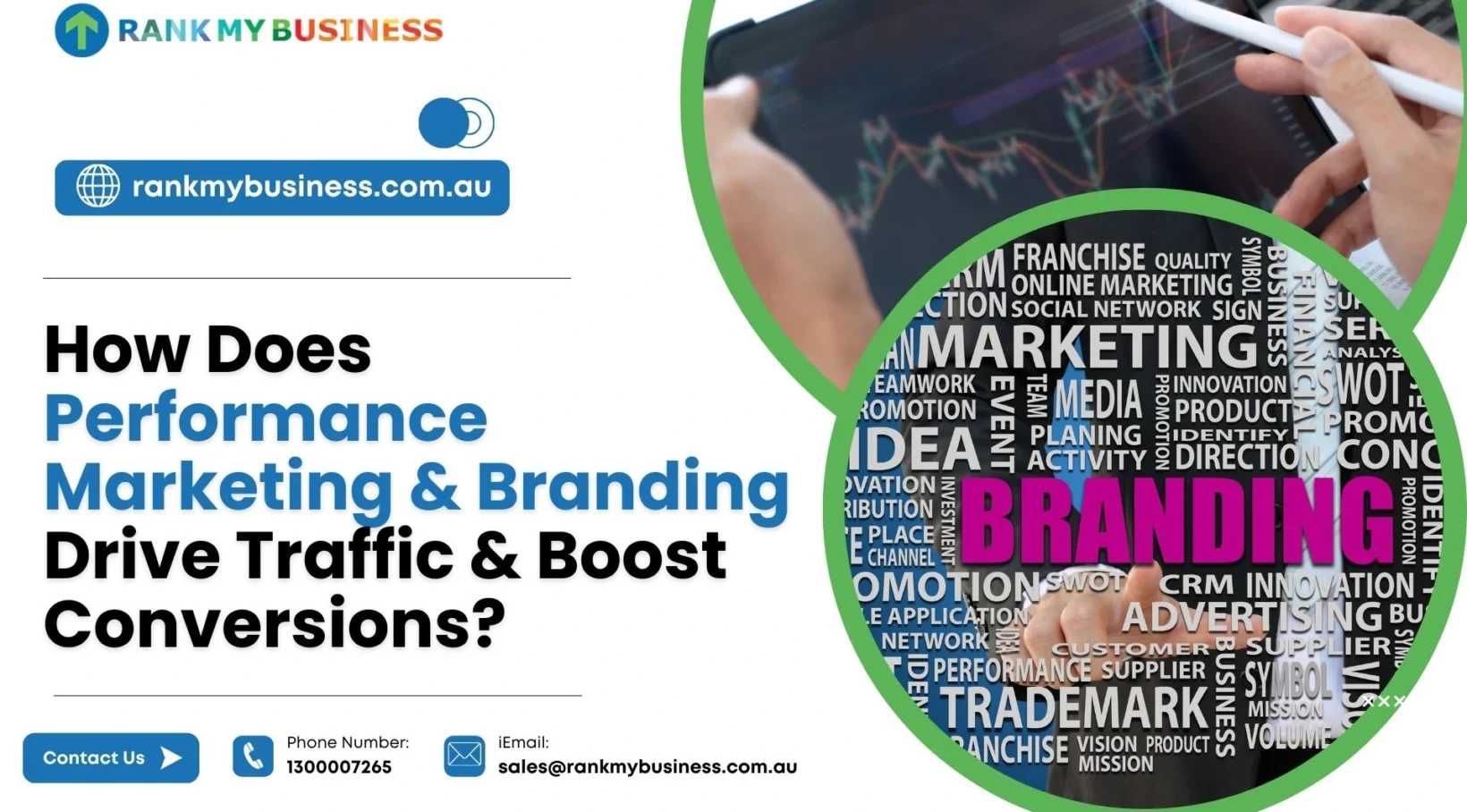In today’s hyper-competitive digital landscape, businesses are constantly searching for strategies that attract attention and drive measurable results. Two critical components of modern marketing—performance marketing and branding—are often viewed as separate entities with distinct goals. However, when combined effectively, they create a powerhouse strategy capable of driving traffic growth and boosting conversions like never before.
Let’s dive into why merging these two approaches is essential and how you can leverage their synergy to achieve your business objectives.
What is Performance Marketing?
Performance marketing is a data-driven approach focused on measurable results such as clicks, leads, sales, and return on investment (ROI). This strategy relies on online advertising channels where businesses pay only when a specific action is completed, making it a highly cost-effective and scalable method of reaching potential customers.
Key Components of Performance Marketing
- Pay-Per-Click (PPC) Advertising – Running ads on platforms like Google Ads and Bing Ads to drive targeted traffic.
- Social Media Advertising – Using Facebook, Instagram, LinkedIn, or TikTok ads to generate engagement and conversions.
- Affiliate Marketing – Partnering with third-party marketers who promote products in exchange for a commission.
- Email Marketing – Sending personalized emails to potential customers based on their interests and behaviours.
- SEO (Search Engine Optimization) – Optimizing content for search engines to attract organic traffic.
Benefits of Performance Marketing
✔ Quick Results – Immediate impact on lead generation and conversions.
✔ Measurable ROI – Every dollar spent is tracked, allowing for precise budget allocation.
✔ Targeted Approach – Ads can be shown to specific demographics, interests, and behaviours.
✔ Scalability – Real-time campaigns can be adjusted based on performance metrics.
However, performance marketing alone is insufficient—it works best when paired with a strong brand identity.
What is Branding?
Branding is the process of creating a distinct and memorable identity for a business. It goes beyond a logo or color scheme and includes the values, mission, voice, and emotional connection a business builds with its audience.
Unlike performance marketing, branding is a long-term strategy focused on building trust, recognition, and customer loyalty.
Key Components of Branding
- Brand Identity – Logo, colors, typography, and visual elements define the brand’s personality.
- Brand Voice & Messaging – The way a brand communicates with its audience, including tone, storytelling, and language style.
- Customer Experience – How customers feel when interacting with the business, from website design to customer support.
- Reputation & Trust – Establishing credibility through consistent quality, positive reviews, and brand storytelling.
- Community & Engagement – Building a loyal audience through social media, content marketing, and customer interactions.
Benefits of Branding
✔ Long-Term Customer Loyalty – Strong brands create an emotional bond that keeps customers returning.
✔ Higher Conversion Rates – People trust and buy from brands they recognize and believe in.
✔ Reduced Marketing Costs Over Time – A well-known brand requires less advertising spend to attract customers.
✔ Competitive Edge – A strong brand differentiates a business in a crowded market.
While branding is a powerful asset, it takes time to build. This is why combining branding with performance marketing leads to the best results.
Understanding the Pillars: Performance Marketing vs. Branding
Before we explore the magic of combining these two disciplines, let’s clarify what each one brings to the table:
Performance Marketing:
This approach delivers quantifiable outcomes, such as clicks, leads, or sales. It relies heavily on data-driven tactics like paid search ads, social media campaigns, email marketing, and affiliate programs. Performance marketing’s beauty lies in its ability to provide immediate ROI through targeted efforts.
Branding:
On the other hand, branding is all about creating a lasting impression. It encompasses everything from your logo and messaging to customer experience and emotional connection. A strong brand builds trust, loyalty, and recognition over time, making it easier for customers to choose you over competitors.
While performance marketing drives short-term action, branding lays the foundation for long-term success. When used together, they complement each other beautifully, addressing immediate needs and future aspirations.
Power of Combining Performance Marketing and Branding
1. Building Trust While Driving Action
Imagine running a Facebook ad campaign promoting a limited-time discount (performance marketing). If users recognize and associate your brand name with quality and reliability (branding), they’re far more likely to click on the ad and purchase. Without a solid brand presence, even the most well-crafted ad might fall flat because people won’t feel confident enough to engage.
You build credibility while encouraging action by integrating branding elements—such as consistent visuals, tone of voice, and storytelling—into your performance marketing campaigns. This dual focus ensures that every interaction strengthens your relationship with potential customers.
2. Maximizing Reach Across Multiple Touchpoints
Performance marketing excels at targeting specific audiences based on demographics, interests, and behaviours. But without a cohesive brand identity, your message may get lost in the noise. By infusing your campaigns with branded content, you ensure that your audience receives a unified experience across touchpoints, whether they encounter your brand on Google Ads, Instagram Stories, or retargeting banners.
For example, if someone sees your ad on LinkedIn and later visits your website, the transition should feel seamless. Consistent branding reinforces familiarity, which increases the likelihood of conversion.
3. Creating Emotional Connections That Convert
One of branding’s biggest advantages is its ability to evoke emotions. People don’t just buy products; they invest in stories, values, and experiences. When performance marketing taps into this emotional layer, it becomes exponentially more effective.
Consider a video ad showcasing real-life testimonials (branding) alongside a clear call to action (performance marketing). Viewers who connect emotionally with the story are more inclined to take the desired action, whether signing up for a free trial or purchasing a product.
4. Long-Term Value Through Retention
While performance marketing generates quick wins, branding fosters lifelong relationships. Customers who resonate with your brand are more likely to return, recommend you to others, and become advocates. You turn one-time buyers into loyal fans by nurturing these connections through ongoing engagement—such as personalized emails, exclusive offers, or community-building initiatives.
This blend of acquisition (performance marketing) and retention (branding) creates a sustainable growth model that benefits your bottom line.
Strategies to Combine Performance Marketing and Branding
Now that we’ve established the “why,” let’s discuss the “how.” Here are some actionable ways to integrate these two disciplines:
1. Leverage Storytelling in Paid Campaigns
Use compelling ad narratives to highlight your brand’s mission, values, and unique selling points. For instance, explain how it solves a problem or enhances lives instead of simply promoting a feature. This approach humanizes your brand and makes it relatable.
2. Optimize Landing Pages for Brand Consistency
Your landing pages should reflect your brand identity through design, copy, and user experience. Ensure that the visuals, fonts, and messaging align with what users expect from your brand. This consistency reassures visitors and reduces bounce rates.
3. Utilize Influencer Partnerships Wisely
Collaborating with influencers allows you to amplify both your reach and reputation. Choose partners whose personal brand aligns with yours and co-create content that feels authentic yet promotional. This strategy blends the persuasive power of influencer marketing (performance) with the authenticity of brand advocacy.
4. Invest in Remarketing with a Brand Focus
Remarketing campaigns give you another chance to connect with users who didn’t convert initially. Use this opportunity to reinforce your brand message by highlighting reviews, case studies, or behind-the-scenes content. This keeps your brand top-of-mind and encourages reconsideration.
5. Track Metrics That Matter
To measure the impact of your combined efforts, track metrics beyond traditional KPIs like click-through rates or cost per acquisition. Look at engagement levels, brand recall surveys, and lifetime customer value to gauge the full scope of your success.
Real-Life Examples of Success
Several companies have mastered the art of blending performance marketing and branding. Take Nike, for example. Their high-energy ads during major sporting events (branding) are supported by targeted online campaigns offering exclusive discounts (performance marketing). Similarly, Glossier has built a cult following by combining aspirational social media content (branding) with strategic influencer collaborations and promotions (performance marketing).
These brands prove that when done right, the fusion of performance and branding creates a virtuous cycle of awareness, engagement, and loyalty.
Conclusion
Combining performance marketing and branding isn’t just a trend—it’s necessary in today’s crowded marketplace. While performance marketing delivers the precision needed to capture attention and drive conversions, branding provides the depth and authenticity required to sustain long-term relationships.
At Rank My Business, we understand the power of integrating these two strategies. By combining performance marketing and branding, you can create campaigns that attract new customers and inspire long-term loyalty.
So, the next time you plan your marketing strategy, think beyond silos. Embrace the synergy between performance and branding, and watch your traffic and conversions









 Back to blogs
Back to blogs
